In Indian Geography, the literacy of India, as reported by the 2011 Census, showcases significant regional variations, with states like Kerala achieving near-universal literacy while others like Bihar lag behind. These disparities, shaped by socio-economic and cultural factors, influence development and policy across the nation.
General Introduction
- Children above 7 years of age who can read and write are considered literate.
- People who can read but cannot write cannot be called literate. Before 1981, people aged 5 years and above were considered literate.
Literacy in India
- After 1961, literacy has increased rapidly.
- The literacy rate was 28.30% in 1961 which increased to 74% in 2011. In the last 50 years, the literacy rate has increased 3 times.
- The male literacy rate was 40.40% in 1961 which increased to 80.9% in 2011 and the female literacy rate was 15.35% in 1961 which increased to 64.6% in 2011. It is clear from this that in the last 50 years, the male literacy rate has increased 2 times and the female literacy rate has increased 4 times. Hence, the female literacy rate has increased more than the male literacy rate.
- After 1981, there has been a rapid increase in the literacy rate. As a result of social awareness, government encouragement and reduction in gender diversification, the female literacy rate has increased.
- There is unevenness in the regional distribution of literacy. The literacy rate is higher in the south than in the north and in the coastal areas than in the interior.
The difference between male and female literacy
- According to the census of 2011, the literacy rate of India is 74.04%. In which male literacy is 82.14% and female literacy is 65.46%.
- There is a difference of about 16.68% between male and female literacy. The highest difference is found in Rajasthan and the lowest difference is found in Meghalaya.
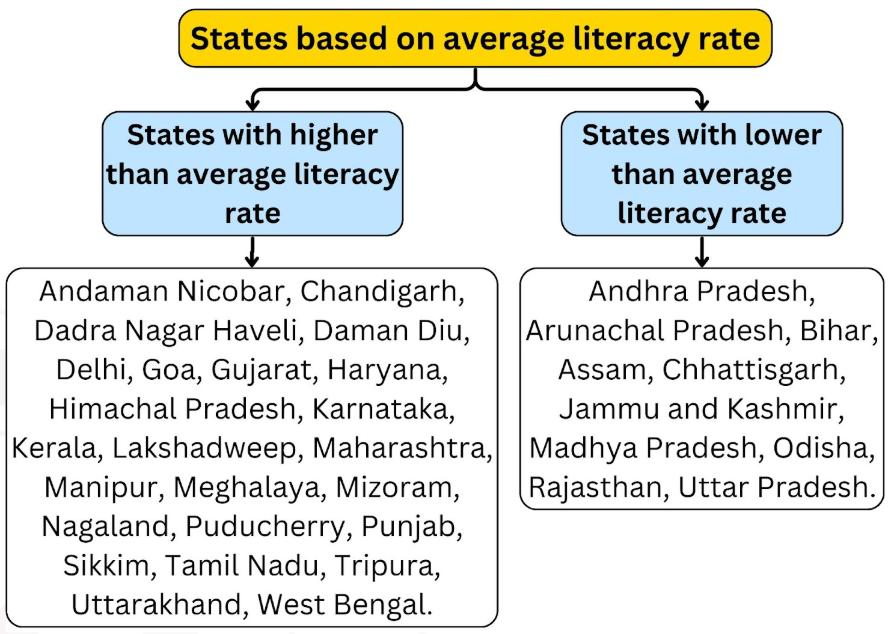
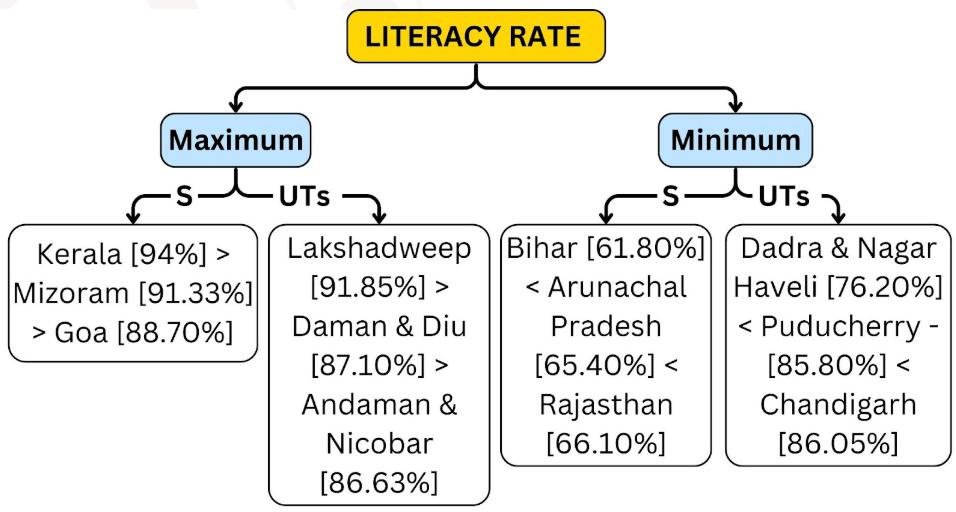
| Female Literacy | ||
| The female literacy rate of India is (64.64%). | ||
| Base | State | Union Territories |
| Maximum | Kerala (92.1%) | lakshadweep |
| Minimum | Bihar (51.5%) | Dadra nagar Haveli (64.3%) |
| Maximum | Kerala, Mizoram, Lakshadweep, Goa, Tripura. | |
| minimum | Bihar, Rajasthan, Jharkhand, Jammu and Kashmir, Uttar Pradesh | |
| Male Literacy | ||
| The male literacy rate of India is 80%. | ||
| Base | State | UTs |
| Maximum | Kerala (96.1%) | Lakshdweep (95.56%) |
| Minimum | Bihar | Dadra Nagar Haveli |
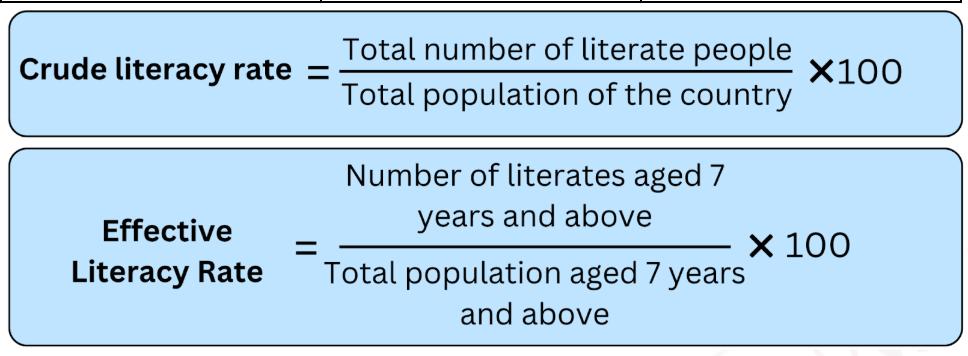
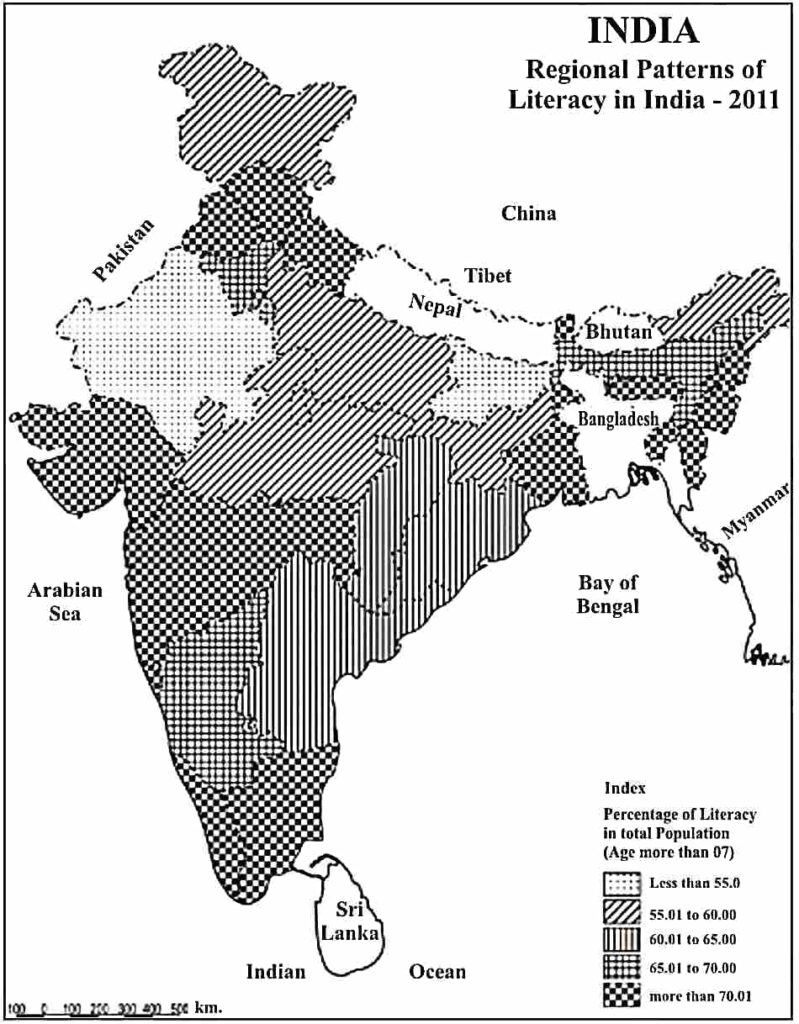
| Census Year | Literacy (in percentage) | ||
| Total | Male | Female | |
| 1901 | 5.35 | 9.83 | 0.60 |
| 1911 | 5.92 | 10.56 | 1.05 |
| 1921 | 7.16 | 12.21 | 1.83 |
| 1931 | 9.5 | 15.59 | 2.93 |
| 1941 | 16.10 | 24.90 | 7.30 |
| 1951 | 18.33 | 24.16 | 8.96 |
| 1961 | 28.30 | 40.40 | 15.35 |
| 1971 | 34.45 | 45.96 | 21.97 |
| 1981 | 43.57 | 56.38 | 29.76 |
| 1991 | 52.21 | 64.13 | 39.29 |
| 2001 | 64.83 | 75.26 | 53.67 |
| 2011 | 74.04 | 82.14 | 65.46 |
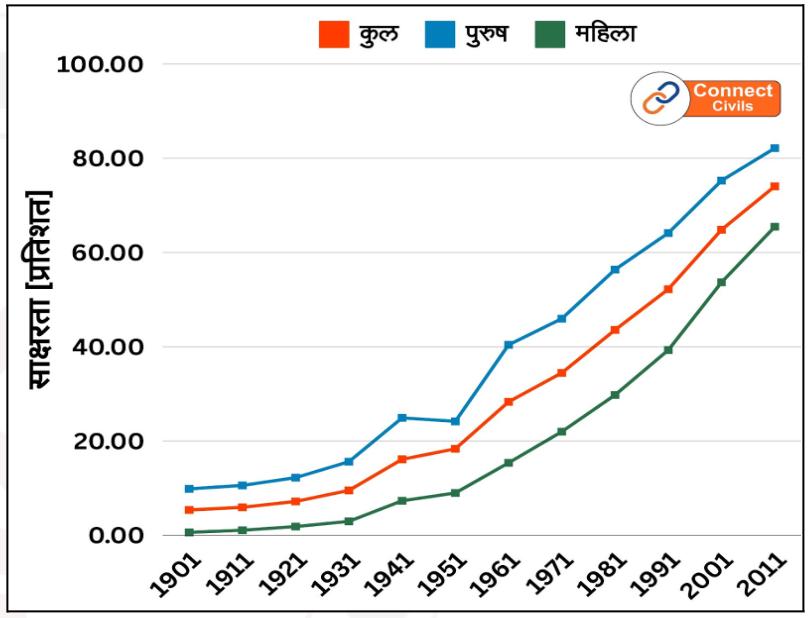
Factors affecting literacy
(i) Expanse of economy, (ii) Level of urbanisation, (iii) Standard of living, (iv) Ethnic composition, (v) Status of women in society, (vi) Value system, (vii) Availability of educational facilities, (viii) Development of means of transport and communication, (ix) Level of technological development and (x) Public policy etc.
